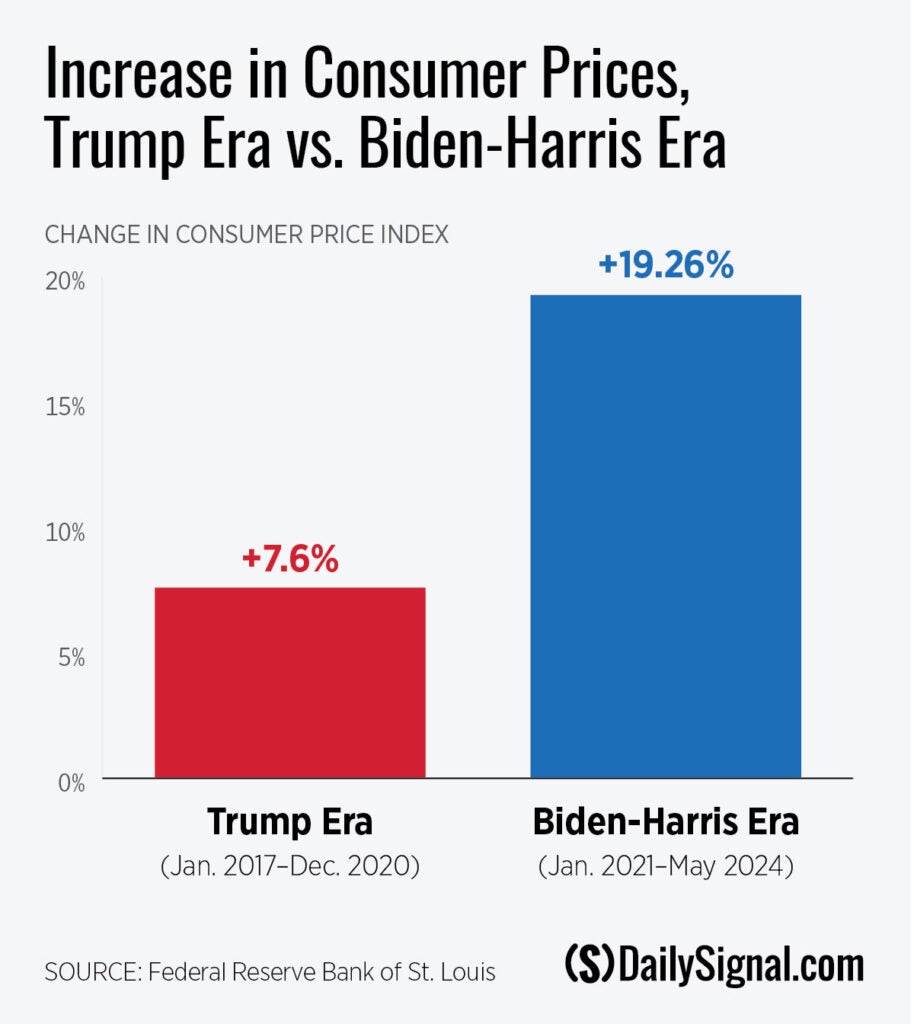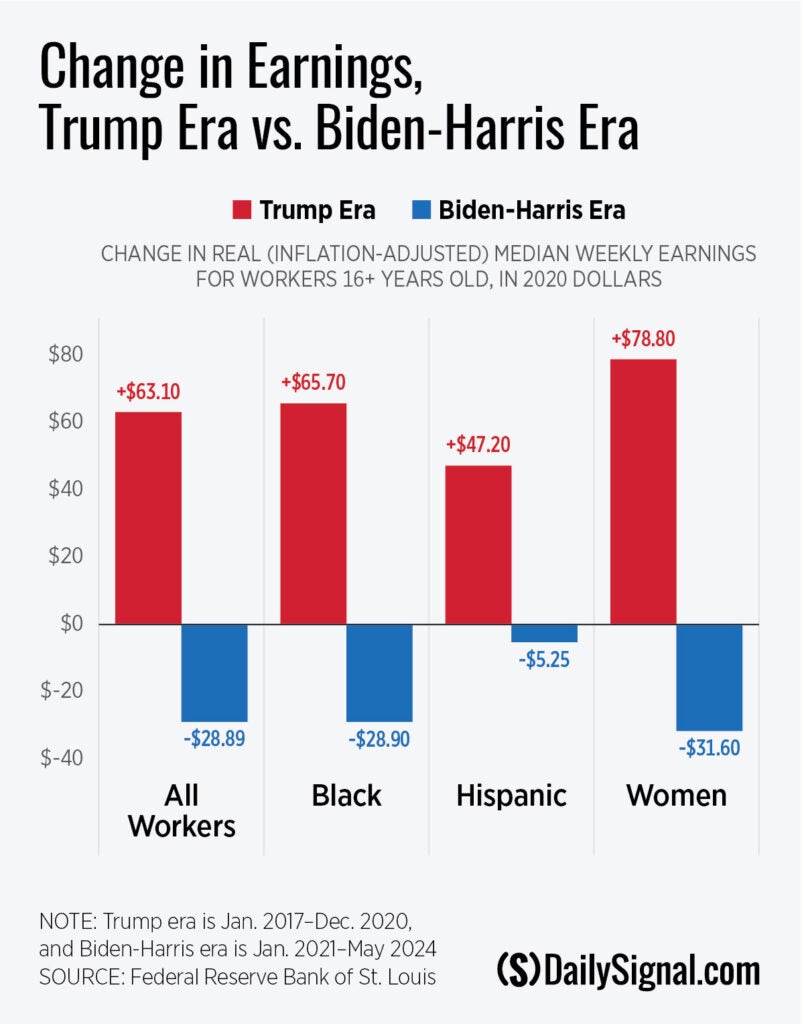Biden-Harris Economic Policies Are Crushing Working Women, Minorities
Sanjai Bhagat / Marlo Oaks /
As the 2024 presidential race heats up, a crucial question looms: How have American workers fared under the Biden-Harris administration compared with the prior Trump administration?
The June 27 presidential debate spotlighted the issue, and the data presents a stark reality. Working Americans are grappling with the worst economic conditions in decades.
Inflation, once a term relegated to academic discussions, now dominates kitchen table conversations across the nation.
American families are struggling to afford basic necessities such as food and fuel. For example, a gallon of milk that cost $3.12 during the Trump years now costs $3.89—a 25% increase. Wages haven’t kept pace with these rising costs, leaving many working families in financial distress.
Despite reassurances from the Biden-Harris administration, the economic policies touted as solutions have, in fact, worsened the financial burdens of hardworking Americans.
During the presidency of Donald Trump, the average annual price increase for goods and services was a modest 1.9%. In contrast, under Joe Biden, prices have surged by more than 5% annually over the past three years, culminating in a staggering 19.26% increase with half a year still to go.
That’s not a minor fluctuation, but rather a troubling trend that spells disaster for household budgets nationwide.

These price hikes can be traced directly to the Biden-Harris spending policies. Ironically, one of their hallmark bills is named the Inflation Reduction Act, yet it has done little to curb rising prices.
Blue-collar workers, particularly women and blacks, have been hit hardest.
Under Trump, real (inflation-adjusted) median weekly earnings increased significantly: $63.10 for all workers, $78.80 for women, and $65.70 for black workers. Under the Biden-Harris administration, those gains have been wiped out, with real median weekly earnings dropping by $28.89 for all workers, $31.60 for women, and $28.90 for black workers.
Hispanic workers, who saw a $47.20 increase in real weekly earnings under Trump, now face a decrease of $5.25 under Biden.

Middle-class families are not only battling skyrocketing inflation, but also soaring housing costs. Mortgage interest rates have surged by a jaw-dropping 70% in just three years.
During Trump’s presidency, the average 30-year fixed-rate mortgage was 3.89%. Today, it stands at 6.95%. Monthly mortgage payments for a median-priced home have ballooned by more than $1,000 compared with the Trump era, making homeownership a distant dream for many.
It’s time for policymakers to confront the harsh reality facing everyday Americans and take meaningful action to address the economic challenges squeezing the life out of the American dream.
That starts with a fundamental shift in how government spending is approached. Washington should learn from states that balance their budgets and prioritize spending based on available resources.
Federal lawmakers have become too comfortable with deficit spending, adopting an unconstrained view of resources. This mindset has led to policies like the Inflation Reduction Act, a trillion-dollar social engineering experiment.
Both sides of the aisle share the blame for this reckless fiscal approach.
Until leadership in Washington acknowledges the hardships everyday Americans endure and acts accordingly, their rhetoric of economic success will ring hollow.
It’s time for a change—one that puts the financial well-being of working Americans at the forefront of policy decisions. The future of the middle class, and indeed of the American dream, depends on it.
We publish a variety of perspectives. Nothing written here is to be construed as representing the views of The Daily Signal.
